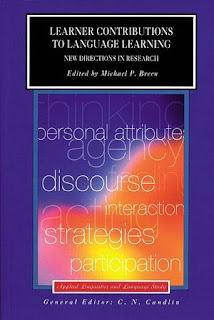When I first run into Tagxedo I was really amazed by the beauty of the images that I could produce, however I had little insight of how to use it in class. I have to admit I gave it a LOT of thought, because my time in class is very limited and tight and I didn't want to use this website just for show - off. I wanted it to be worthwhile. Giving the children something to do with the language they learn is the best way for them to learn, there is no doubt about that. Moreover their ability to use technology is undeniable, it gives them satisfaction and the false idea that they are actually playing, not doing homework. So I came up with a bunch of activities that we can do in class using Tagxedo and I am thinking of gradually introducing them to our lessons, depending on the aim, time availability and of course the children's age.
Here are some of the ways you can use Tagxedo to teach vocabulary:
Vocabulary Introduction:
1. While eliciting new vocabulary, ask on of the students to act like your helper. As you elicit, ask the helper to type the new words in Tagxedo, then the whole class decides on the colours, shape, font and theme of your new word cloud. You can even divide your new vocabulary into categories: Nouns, Adjectives, Verbs and so on.
Ways to use the clouds:
- You can use these clouds for sentence construction activities, in which a child picks a word they know and the rest of them have to produce a correct sentence using that word.
- You can play Red Word Green Word. Divide the class in two groups. Ask one student to act as the game host. The host randomly picks words from the white board, then the teams take turns either producing a correct sentence, or giving the definition of the chosen word. Each team notes down the words they have used correctly. When they make a mistake, they loose five words. The game finishes when all the words are used.
2. You can also make the word clouds before the class is introduced to the new vocabulary. In your cloud, include the word definitions in the mother tongue. Ask the children to identify and connect the definitions to the words.
Vocabulary homework
1. You can also use these clouds for vocabulary practice, if you have a website or blog that you can upload your clouds. Give each child some word definitions in their native language. Ask them to go to your page, find the equivalent English word in the cloud and produce a short text or sentences using the words they found.
2. Ask the children to make their own clouds at home as copying practice. Typing the words in can be very helpful for them in order to remember the spelling. It would be a good idea to ask them to type the list in Word first, spell check and then copy paste the words in Tagxedo.
Depending on the age, you can even ask them to download their clouds and send them to you via e-mail.
Here are some word cloud examples I have made for my FCE students using Tagxedo. The words are used can also be found in my Spelling City page, so have a look and tell me what you think!
Here are some word cloud examples I have made for my FCE students using Tagxedo. The words are used can also be found in my Spelling City page, so have a look and tell me what you think!

.jpg)




























